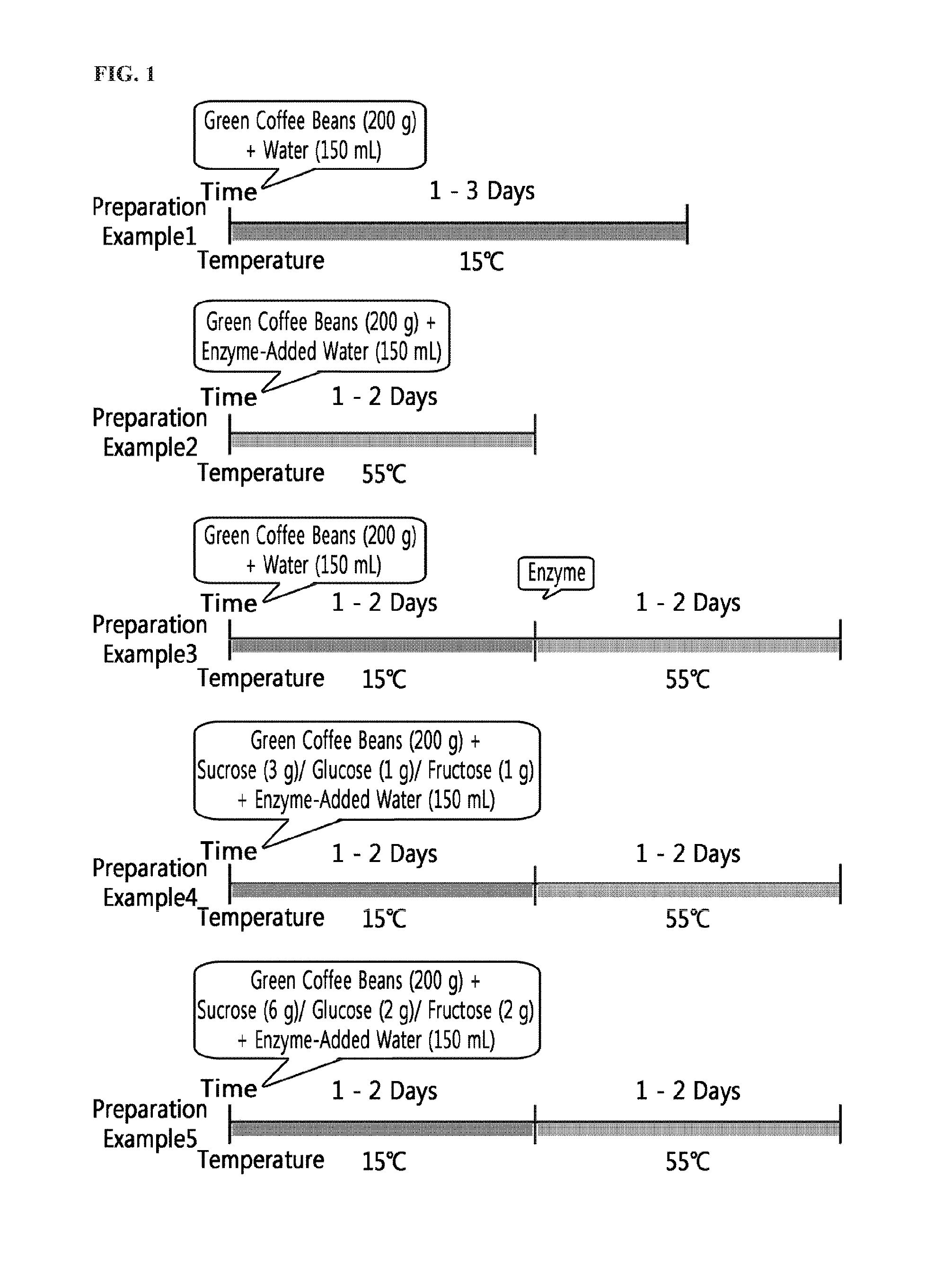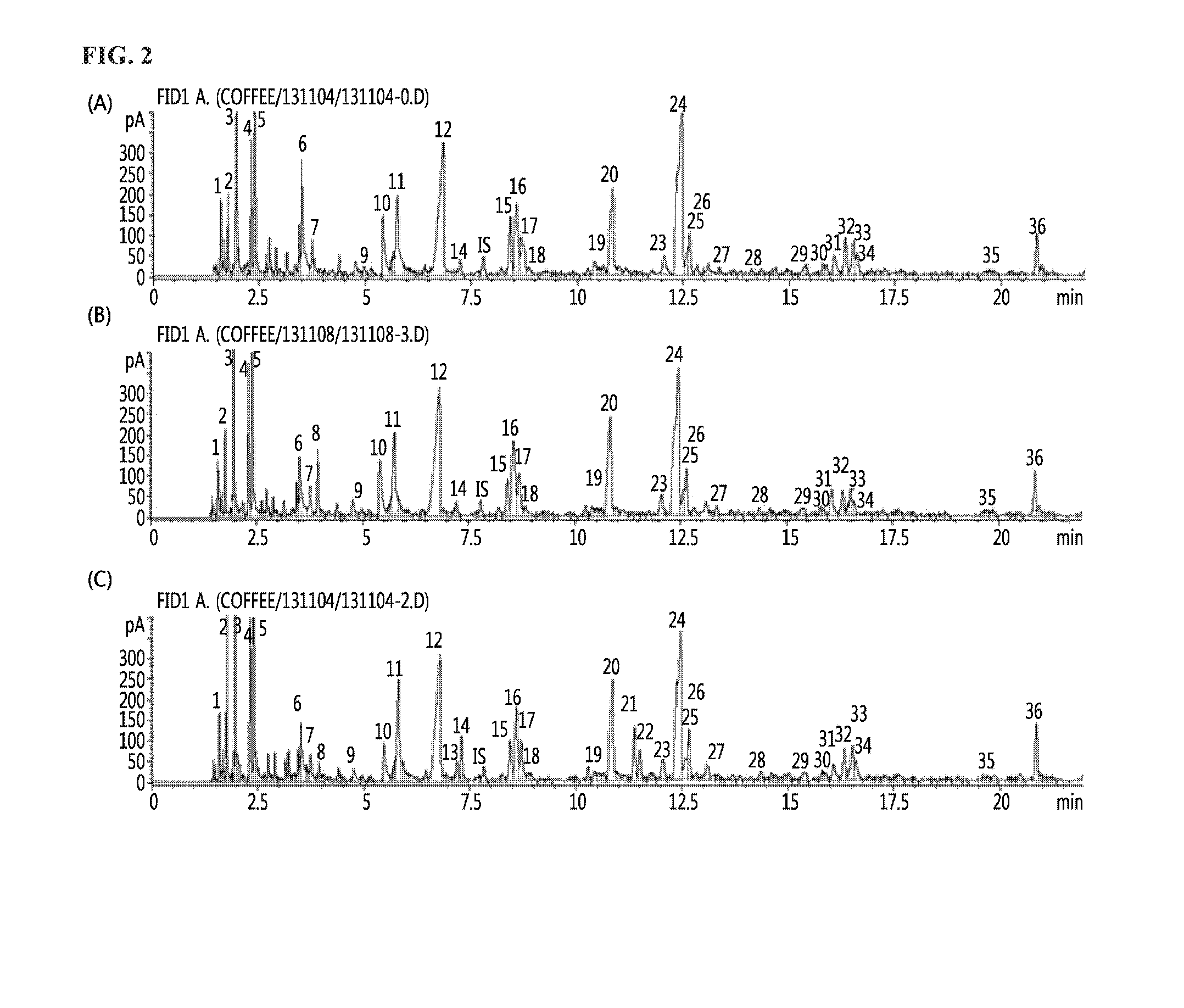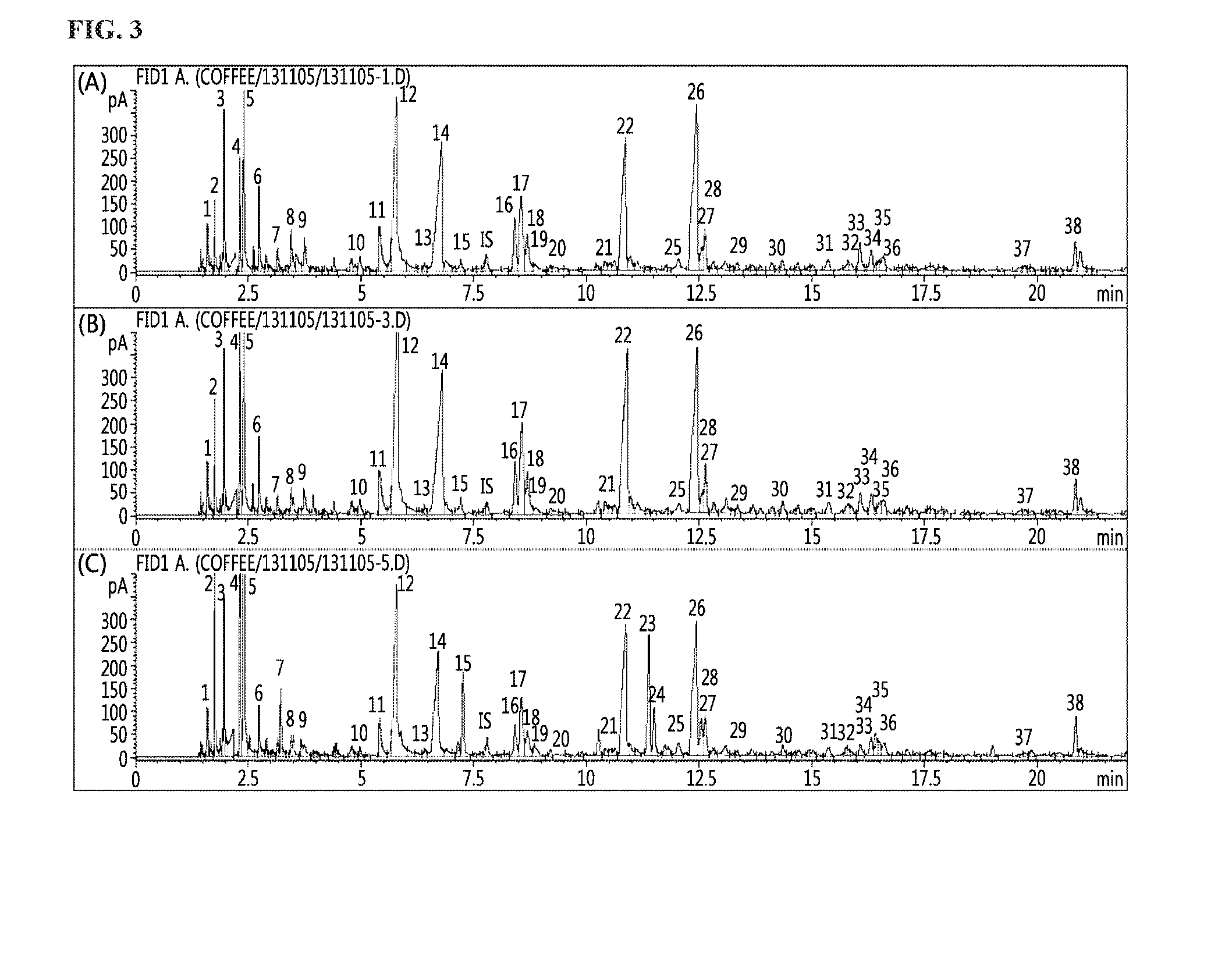Pretreatment process of green coffee beans for improving aroma and taste of roasted coffee
a technology of green coffee and pretreatment process, which is applied in the field of pretreatment process of green coffee beans for improving aroma and taste of roasted coffee, can solve the problems of less desirable flavor, 20% or more of the total production, poor evaluation, etc., and achieves the effects of reducing rough and strong smell, increasing desirable aroma, and reducing bitter tas
- Summary
- Abstract
- Description
- Claims
- Application Information
AI Technical Summary
Benefits of technology
Problems solved by technology
Method used
Image
Examples
example 1
Preparation of Coffee Beans Using Pretreated Green Coffee Beans
preparation example 1
[0073]Green coffee beans (200 g) washed by a conventional water washing process were added into a zipper bag and then 150 mL of drinking water at from 15° C. to 25° C. was poured thereinto, and the water content of the green coffee beans was adjusted in the range from 40% to 60% (about 50%) relative to the total weight of the green coffee beans. After sealing, the zipper bag was placed in a 15° C. incubator for from 24 hours to 72 hours for the germination of the green coffee beans. During the germination, the green coffee beans were pretreated by frequently opening the zipper bag to supply oxygen necessary for germination. The thus-germinated green coffee bean sample was well spread over an aluminum spray and dried in a 55° C. hot-air drying oven to adjust the water content of the green coffee beans in the range from 10% to 12%. The thus-pretreated green coffee beans were roasted according to a conventional method. The roasting was performed using the drum-type Sample Roaster (Prob...
preparation example 2
[0074]Green coffee beans (200 g) washed by a conventional water washing process were added into a zipper bag and then 150 mL of drinking water at from 15° C. to 25° C., in which a complex enzyme containing protease and carbohydrase was contained in an amount of 0.2% relative to the total weight of the green coffee beans, was poured thereinto and mixed well, and the water content of the green coffee beans was adjusted in the range from 40% to 60% (about 50%) relative to the total weight of the green coffee beans. Then, the complex enzyme was absorbed into the green coffee beans. After sealing, the zipper bag was placed in a 55° C. incubator for from 24 hours to 48 hours for the germination of the green coffee beans. During the germination, the green coffee beans were pretreated by frequently opening the zipper bag to supply oxygen necessary for germination. The drying and roasting after cultivation were performed in the same manner as in Preparation Example 1.
PUM
 Login to View More
Login to View More Abstract
Description
Claims
Application Information
 Login to View More
Login to View More - R&D
- Intellectual Property
- Life Sciences
- Materials
- Tech Scout
- Unparalleled Data Quality
- Higher Quality Content
- 60% Fewer Hallucinations
Browse by: Latest US Patents, China's latest patents, Technical Efficacy Thesaurus, Application Domain, Technology Topic, Popular Technical Reports.
© 2025 PatSnap. All rights reserved.Legal|Privacy policy|Modern Slavery Act Transparency Statement|Sitemap|About US| Contact US: help@patsnap.com



